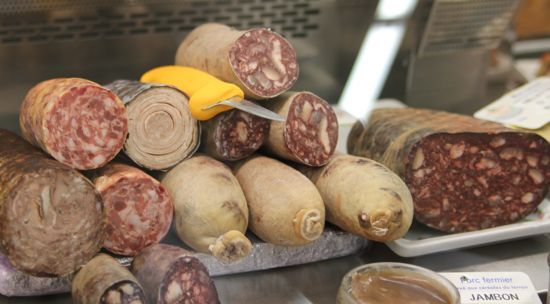
The eleventh challenge. We’re almost through the Year of Meat and a trip to France is so close for one of you.
We’ve come a long way. We’ve salted, brined, smoked, ground, stuffed, packed and stretched our way through parts of pork, slabs of beef, flocks of chickens, dozens of ducks and hundreds of feet of casings. We’re ready to cure.
The weather is cooling and it’s time to hang meats and sausages in the garage, the wine refrigerator, the attic, the back of the pantry – wherever you have the right conditions for curing.
Apprentice Challenge: Please cure a sausage, ex: soppresata, saucisson sec, Spanish chorizo, salami or coppa
Charcutiere Challenge: Please cure a whole cut, ex: lonzino, bresaola, jambon de Camont, lardo
Some of these cures may take longer than the month usually given to complete a challenge, so the deadline for posting is December 1st. That’s six and a half weeks. If you’re going to do a whole cut cure, you’d better get cracking, you’ll want every minute of that time.
Tag your post charcutepalooza and we’ll be sure to see it. Share your blog post with Punk Domestics. Cross post and upload photos on Charcutepalooza’s Facebook page and Flickr page. And don’t forget to share all those great original recipes on Food52.
Please take note – the final challenge will be announced November 1st. And the posting deadline will be December 15th. Also on November 1st, expect to hear about all the end of the year hullaballoo. TrufflePig, Kate Hill and the rest of our Grand Prize sponsors are finalizing all the plans.
Making the Cut
My recent trip to Gascony provided a great education in the making of a perfect dried sausage. Sausage that is cured should be deeply flavored and redolent of the pig, its diet and the farm where it lived. Some sausages are heavily spiced and reflect the country of origin. But under all those spices, you want to taste excellent meat.
There is a critical difference between the meat we have available in the US and what is sold at the markets in France. The French serve up older meat. Older cattle. Older pigs (12 to 14 months, versus the 6-8 months here.) As animals age, the cellular structure changes; they grow and mature into muscled protein and flavor carrying fat. I tasted the proof. The older meat was porkier. The bevette was beefier. These meats had so much more flavor, texture and character.
This is one of the lasting lessons of Kate’s Camont kitchen. I hope to find a farmer who will raise a pig for me, and do so for a year. I’m going to talk to all my connections at the farmer’s market and see if I can spread the word. Which one of you will learn from Kate next March? I already envy you! The Grand Prize. It’s just a few weeks away.
Temperature and Humidity
At the Chapolard charcuterie shop, there is a serious looking machine serving as a curing chamber. In the first week, saucisse and sauccison seche are cured here, carefully monitored for temperature and humidity. After that first week, the sausages are placed in another cool, moist room to fully cure – an additional four to five weeks for the large saucisse – think slightly moist in the center salami – and five for the thinner saucisson seche – a kneaded sausage that is quite dry (seche) – another of their magical specialties.
Most of us don’t have these great machines at home, so we must balance curiousity with caution. The recipes in Charcuterie all use curing salts, and that’s what will ensure food safety. We’re back to that pink salt debate, but it’s ramped up now – on to Cure #2. I encourage you to do your own research and decide for yourself about curing sausages and hanging whole cuts with or without these curing salts.
You may remember, back when we were curing pancetta, we learned the perfect conditions are in the 50-60°F range with 70% humidity. I wandered all through my house until I happened upon the right mix, and found the sweet spot in a decidedly unpicturesque corner of the garage. (No, we don’t park the car in there.)
Airflow is critical, so add a small fan if the space is not well ventilated. Up the humidity with a bowl of water. Check every day. Or, if you’re like me, several times a day.
Your best measure of the curing will be weight. Weigh the sausages or meat before hanging and then again after the recommended amount of time. You should expect about a 30% loss of weight when the cure is complete.
Super Sausages
When I was in college, one of my housemates came from a huge Italian family. His grandfather made (rather dreadful) wine, amazing tomato sauce in jars, and soppressata – what the family called Super Sausage. Every autumn, in that Pittsburgh row house dozens of sausages hung from the attic’s rafters, each filled with hand chopped pork and a secret blend of spices. I had never met anyone who did such a thing, but the memory has stayed with me. Now, I’m making super sausages of my own.
Before you rush into the recipes, read the introduction to Chapter Five – The Artist and the Sausage. Seriously. There is a lot of help there and important information about safety. This is hard core charcuterie -making salume – and you don’t want anything to go awry.
Grind the sausage using the large die. Gather the meat and spices together with your hands (or use the mixer.) I prefer to use my hands, as I’ve become familiar with the feeling when the meats are combined well, but still have some texture. Fill the casings well and completely, knotting twine between the sausages to finish.
Puncture the sausages all over using a sausage prick – DIY one with a wine cork and some sewing needles. Air pockets are not your friend, and these miniscule holes will help the air release from the sausages and keep the casing from wrinkling like a sharpei.
Then hang those beauties up to dry. It’s normal for an ashy mold to form on the outside of the sausage, but if the mold turns black, or is long and hairy, that’s a bad sign. Your temperature or humidity may not be conducive to curing in that spot. This is another reason to check on your babies every day.
Curing Whole Cuts
Whole pieces of meat hanging in the garage. It smells amazing in there. The dog walks through with his nose at 90° – looking for that smell, that lovely smell.
But be careful. Remove all the fat or you risk the fat going rancid before the meat cures. Be cautious with your curing temperatures. Airflow and ventilation are critical. Trim up the whole cuts to make the pieces uniform, to ensure even curing. Wipe down the curing meat with wine or vinegar to keep mold at bay. Sloppy trimming means narrow ends may get overcured while the center of chubby pieces might not be fully cured. Obsessively weigh these curing meats to determine doneness. Don’t get complacent.
You may want to try a few different cuts of the pig and cow – there are so many options. I’m still mulling over a gorgeous little tenderloin of pork I tasted in France. It had been salted, lightly smoked and air cured for a little over two weeks. It was divine.
At Camont, and at the Chapolard farm, I became obsessed with Noix de Jambon, literally the nut of the ham. Les Grrls renamed them Jambons de Camont, in honor of Kate Hill’s hospitality and education. These little nuggets of smoked, cured ham are so darned delicious that I had to make them immediately upon returning home.
Cured in about three weeks, it’s a far quicker way to smoky ham flavor than the months to make old fashioned country ham or prosciutto. For this challenge, I ordered a half ham from Pam the Butcher at Wagshal’s. I intended to cut as many ham-ettes as possible, then grind the remaining scrap with freezer-finds – shoulder and belly scrap – to make Charcuterie’s saucisson sec and Dominique’s saucisse.
Beware the half ham. I should have asked more questions. I literally got the top half of the ham. My jambons were shorter and smaller, but still very tasty. In retrospect, I suppose I could have taken the whole ham and given the gift of meat for the holidays…
From half a ham, I cut four jambons, but only three were suitable for hanging. The fourth had been, in a word, butchered. The cure is short – only 48 hours – and the meat is well peppered before smoking and then air drying. It’s salty, spicy, smoky, silky, tender and chewy all at once. Heaven.
Here’s a little more genius from Gascony: When you find your cured meats have lost all moisture and are hard little nuggets in the back of the refrigerator drawer, use a microplane or a grater and shower saucisse goodness over salads, macaroni and cheese, soups, eggs or anything else you can think of.
Even after watching Dominique (twice!) and Camas skin, bone out and cut up a ham, I studied this video “How to cut fresh ham for noix de jambons” from Neal Foley (on Twitter, @PodChef) about ten million times before taking the first cut….
And don’t miss -
Hank Shaw’s Lonzino
Matt Wright’s Port and Fennel Pollen Salami
Recipe courtesy Dominique Chapolard and Kate Hill
Makes anywhere from six to twelve jambons, depending on the size of the ham. The scrap and trim makes a wonderful fresh sausage. Or grind for cured saucisse or saucisson seche. Trim the skin into long rectangles, scraping away the fat. Roll up and truss – a wonderful addition to beans or soup. The bone will add flavor and body to your soup pot or, once roasted, a big pot of Italian ‘gravy.’
1 fresh ham
Plenty of Coarse Sea Salt
Plenty of Coarse Ground Black Pepper
Twine
Compression netting, nice, but not critical
Skin the ham and debone.
Carve as many jambons from a whole fresh ham as possible. Yield will range from 6 to 12, depending on the size of the ham. Trim carefully. The more uniform, the more evenly they will cure.
Rub coarse sea salt into the meat on all sides and into any knife cuts.
Refrigerate the jambons, uncovered, on a rack sitting over a sheet pan, for 48 hours.
Knock off any remaining salt crystals (most will have been absorbed) and then roll the jambons in a lot – REALLY A LOT – of cracked black pepper, covering every inch.
Half-hitch each jambon into a tight form, then snuggle it inside some elastic netting. (Your butcher might be willing to sell you a couple of feet.)
Smoke the jambons for 10-12 hours at the lowest, coolest smoke you have. I ran the Bradley smoker, with hickory chips, at 110°.
Hang for about three weeks, or until the jambons have lost 30% of their weight.
Slice thin – love using a slicer for this – and serve.
Charcutepalooza loves our sponsors. D’Artagnan , generously offering 25% off the meat-of-the-month. If you aren’t receiving your email with the secret code for Charcutepalooza members, register here. And the trip to France – an awesome grand prize deliciously designed by Trufflepig and Kate Hill at Camont. Love to Kinetic Web Solutions and @CreativCulinary who helps us navigate technology. And, Armagnac CASTAREDE, providing celebratory Armagnac to our Grand Prize winner’s party in Paris.
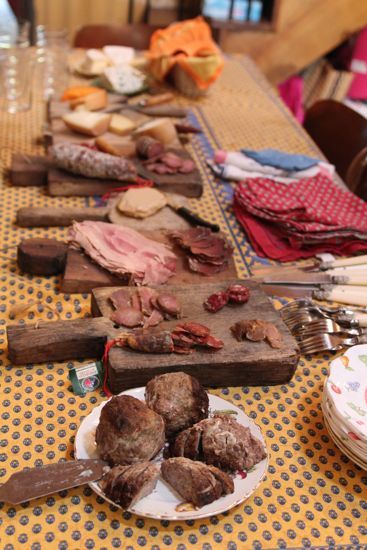
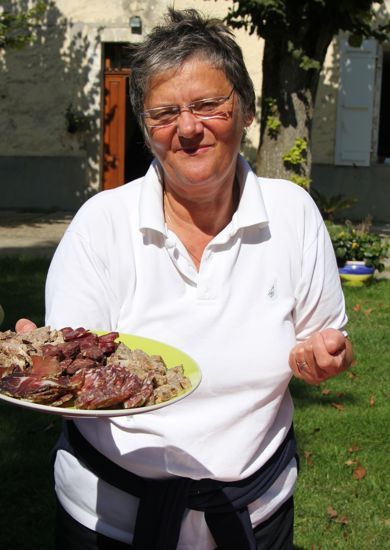
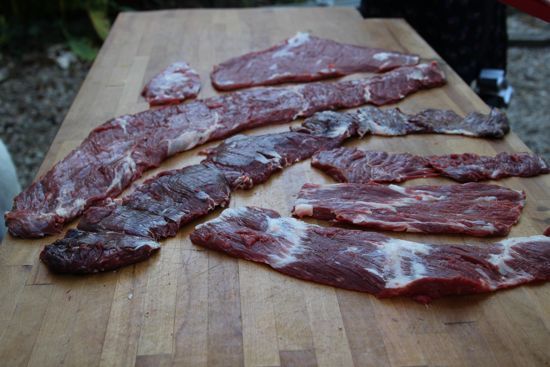
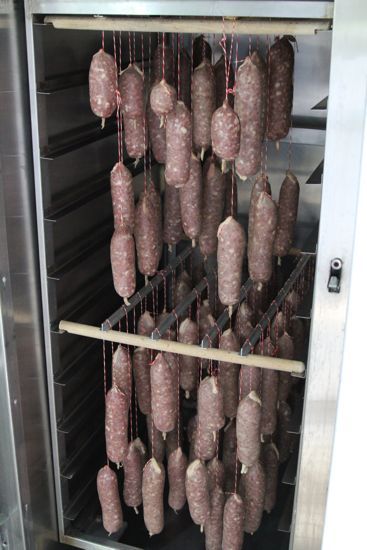
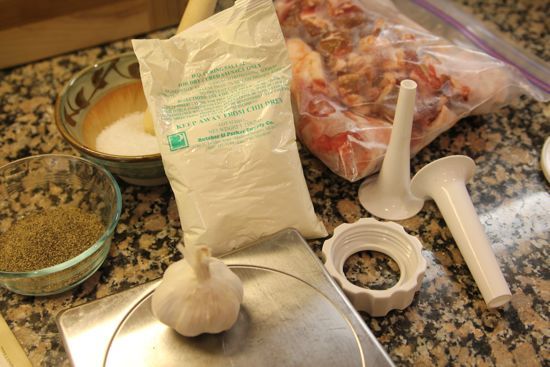
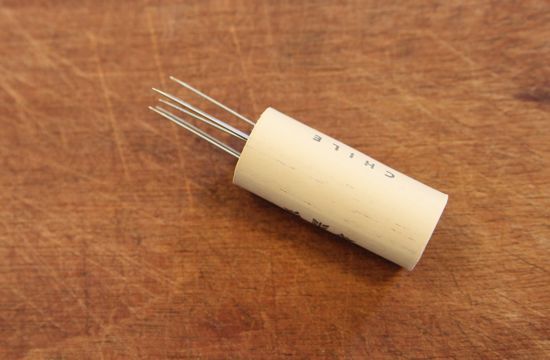
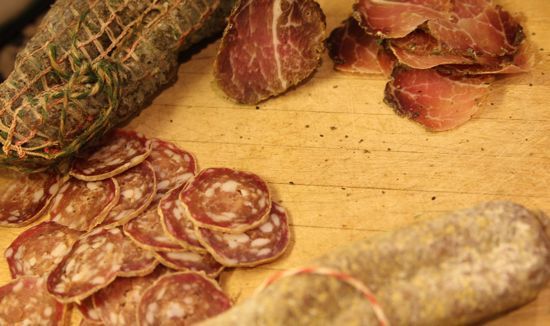
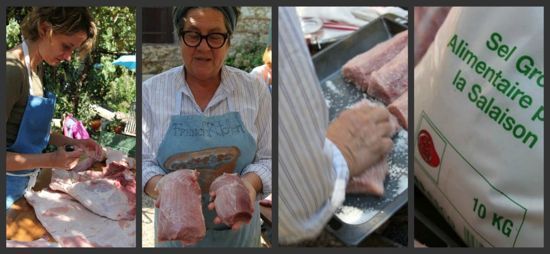
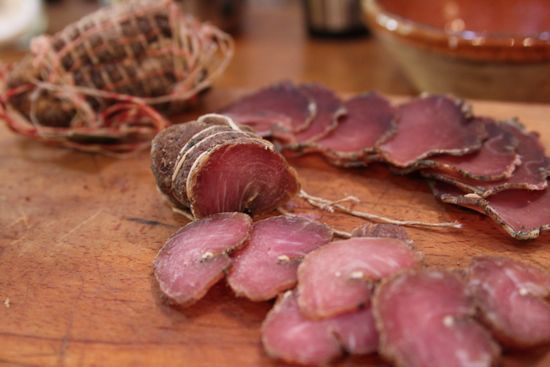
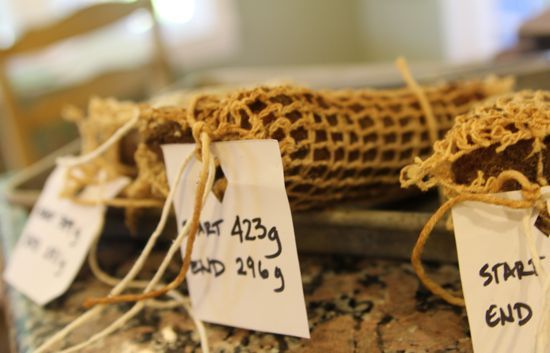

See what other Food52 readers are saying.